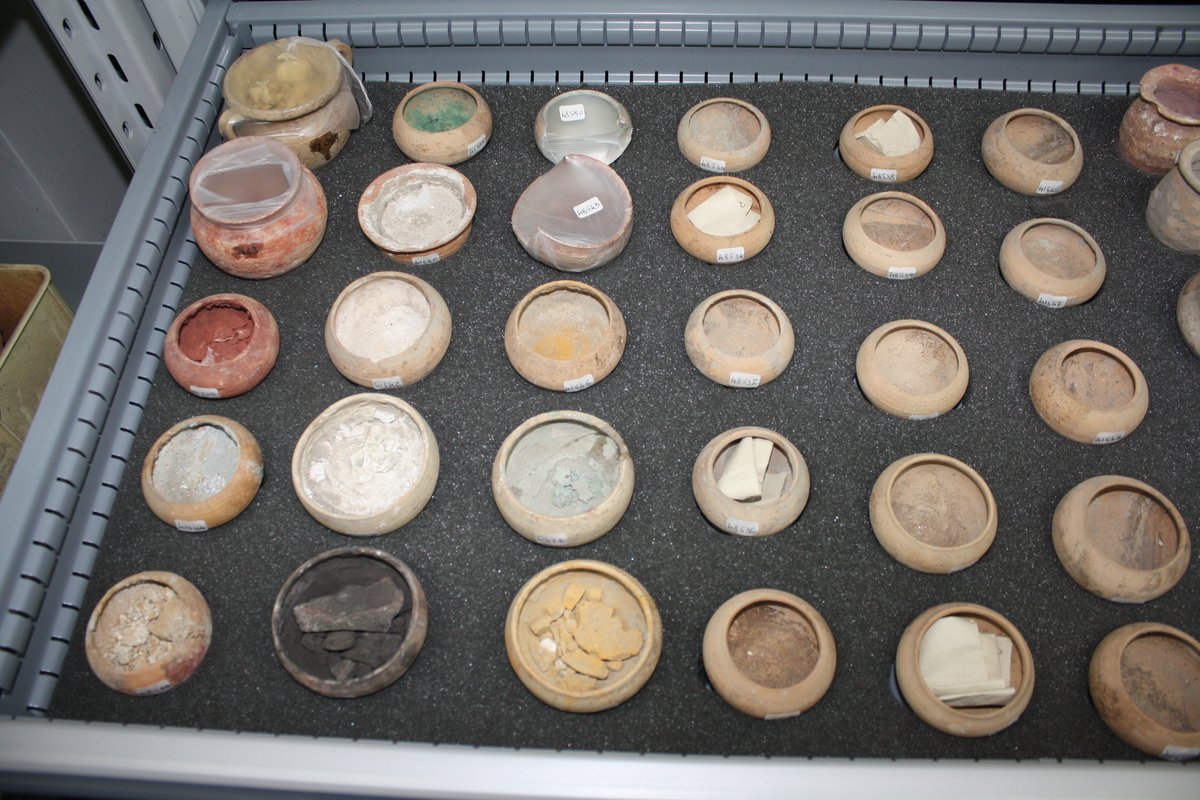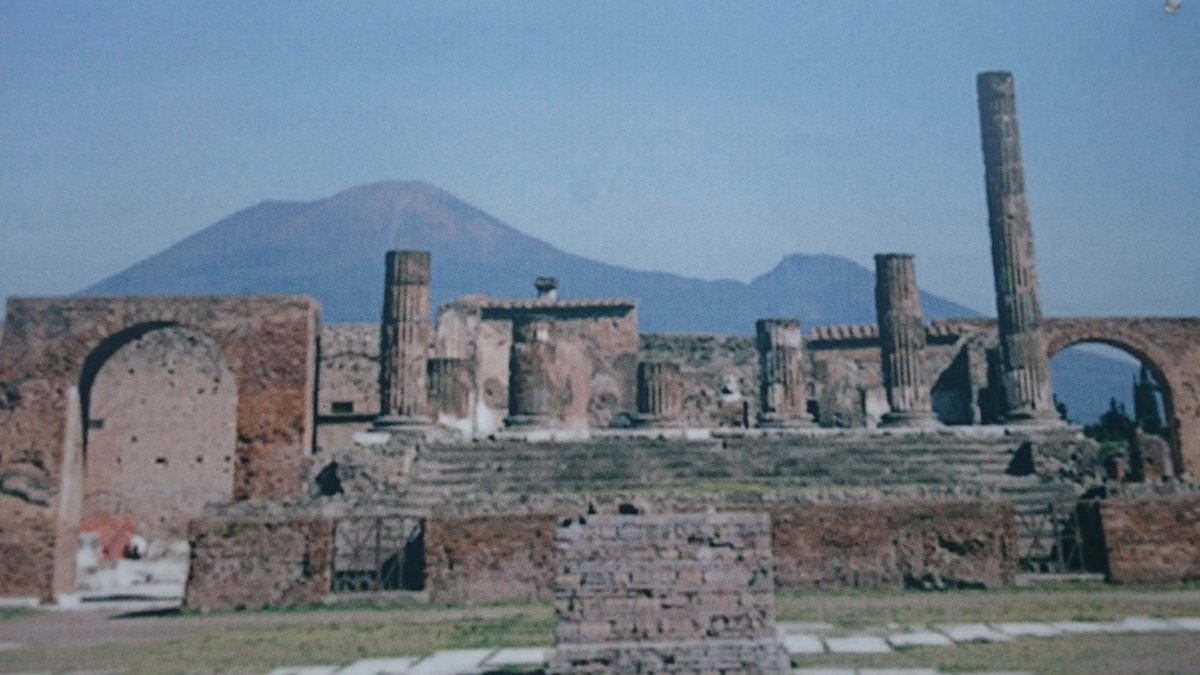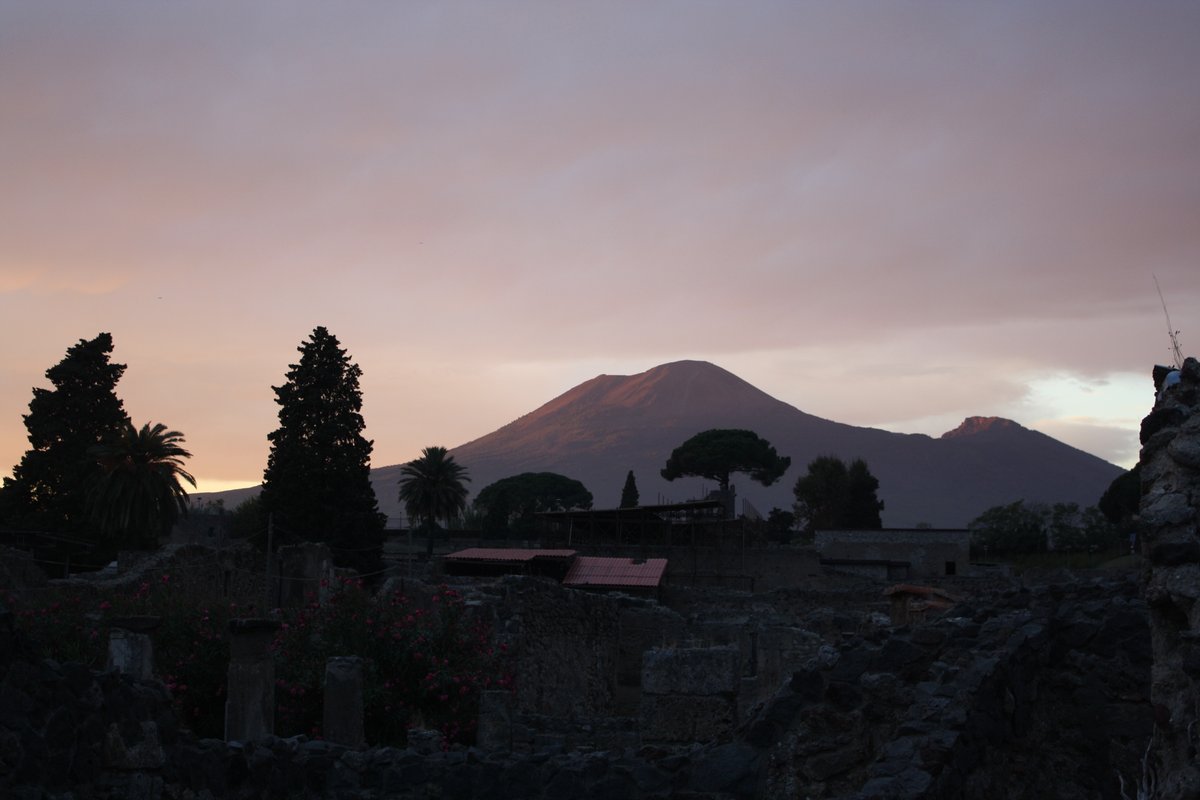
In today’s #thread, we are going to talk about the first scientific analyses of the pigments employed on the mural paintings of @pompeii_sites, published by Jean-Antoine Chaptal (1809). 



Chaptal was lucky enough to receive 7 pigment samples found at @pompeii_sites from Joséphine de Beauharnais, Napoleon’s wife, Empress of France, and Queen of Italy in 1809.
https://twitter.com/S_Berthelemy/status/1354117560619454465
According to him, the pigments were found in a shop corresponding to a pigment trader. The first sample was a greenish clay, which he found similar to the Verona earth used at that time, a mineral composed of iron silicates (celadonite, glauconite).
https://twitter.com/pompei79/status/1129044431682850817
The second sample was a yellow ochre. Since Chaptal was aware of its conversion into red ochre at high temperatures, he wrongly supposed that the overall eruption temperature had not been very high due to the preservation of the yellow hue.
https://twitter.com/cinnabarim/status/1263151377695625217
The third sample was a red ochre. Chaptal proposed that it could have been obtained by calcination of the previous yellow pigment. However, the impurities found in the ochres of @pompeii_sites suggest that they were naturally coloured clays, not calcined.
https://twitter.com/cinnabarim/status/1263151408624345091
The fourth sample was white pumice. The remaining three samples required more exhaustive chemical analyses in order to determine their composition since they were complex substances. 

The fifth sample was what we describe today as #EgyptianBlue, found in tiny cubes as seen in the second picture. Chaptal reported that the blue hue was more intense in the inner part than in the outside.
https://twitter.com/cinnabarim/status/1276906074277384193
If current-day heritage scientists wish to prove that a certain pigment is #EgyptianBlue, they can just rely on spectroscopic techniques to compare the analytical signals of the pigment with those of a standard.
https://twitter.com/MIT_CEE/status/1147133054915424256
However, Chaptal was not that lucky and had to base all his characterization on the behaviour of the pigments upon acids, bases, or heat exposure.
Chaptal could conclude that the blue pigment was composed of copper oxide, lime and alumina, and partially vitrified. This is in fairly good agreement with what we know today as #EgyptianBlue: CuCaSi4O10. He only forgot the sand.
https://twitter.com/cinnabarim/status/1276906085086105601
H.V. Descostils, another French chemist, had already found a vivid and “vitreous” blue on the paintings and hieroglyphs of an Egyptian monument and proved the presence of copper, so it was known that this blue pigment was already in use before Roman times.
https://twitter.com/Oskar_KimikArte/status/952997063259648000
The sixth pigment presented a paler blue hue and responded in the same way to the tests performed by Chaptal. He supposed both blue pigments were the same compound, although the sixth had more lime and alumina.
Finally, the seventh pigment given by Empress Joséphine was a pink and soft compound. Thanks to his analyses, he proved it could be a lake pigment on an aluminum substrate, in which madder had been applied as colouring substance.
https://twitter.com/cinnabarim/status/1268200206551711747
Again, he was pretty close. Current-day analyses have demonstrated that the substrates of pink lake pigments employed in @pompeii_sites were volcanic aluminosilicates and that madder roots were indeed used to obtain a pink hue.
https://twitter.com/cinnabarim/status/1268200231692312579
In case you want to have a look at the original publication of Jean Antoine Chaptal (1809), follow the link below. I love how he describes the samples and the analyses, just as excited as we are today when we get to study the pigments of @pompeii_sites.
babel.hathitrust.org/cgi/pt?id=chi.…
babel.hathitrust.org/cgi/pt?id=chi.…
• • •
Missing some Tweet in this thread? You can try to
force a refresh






















